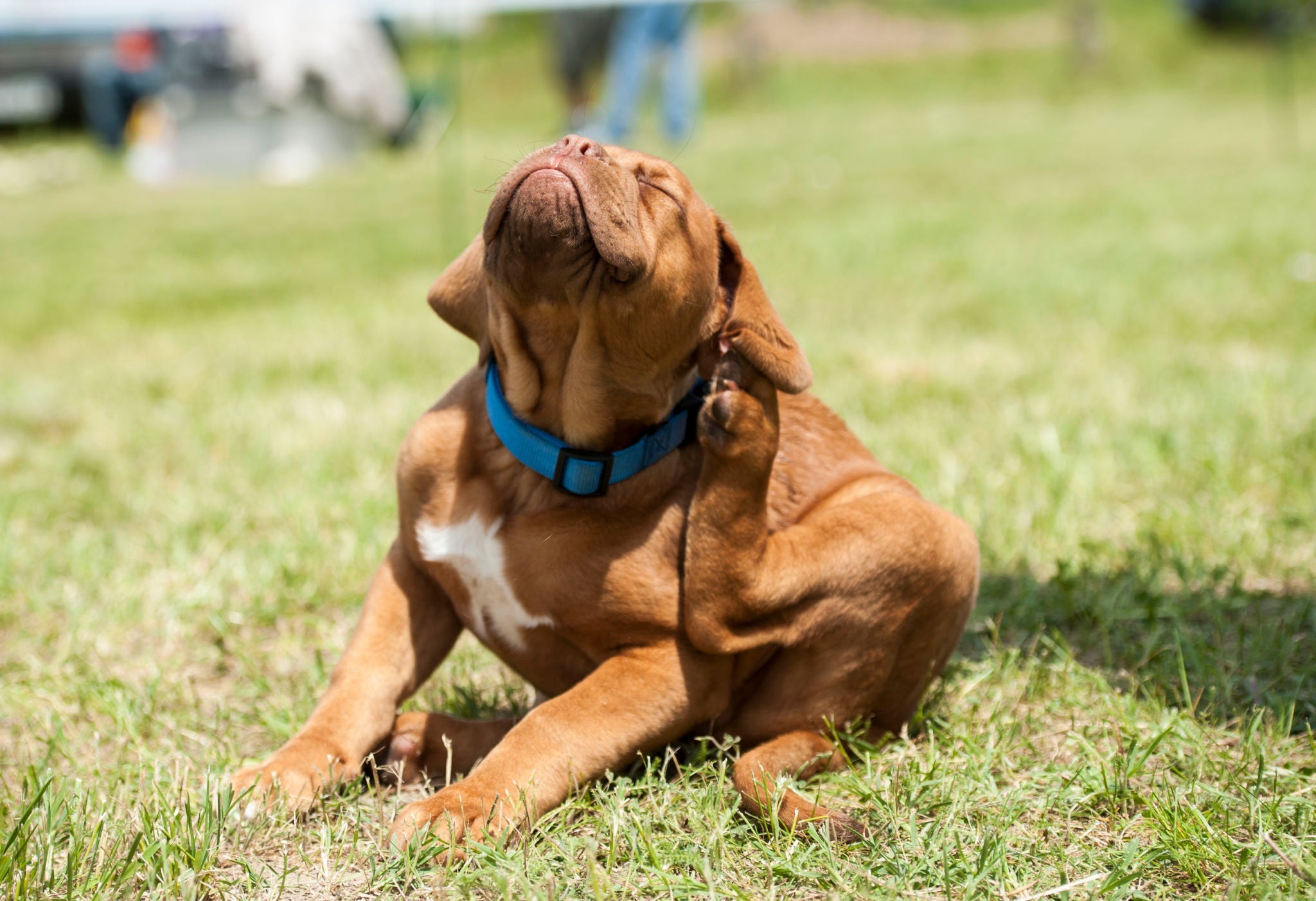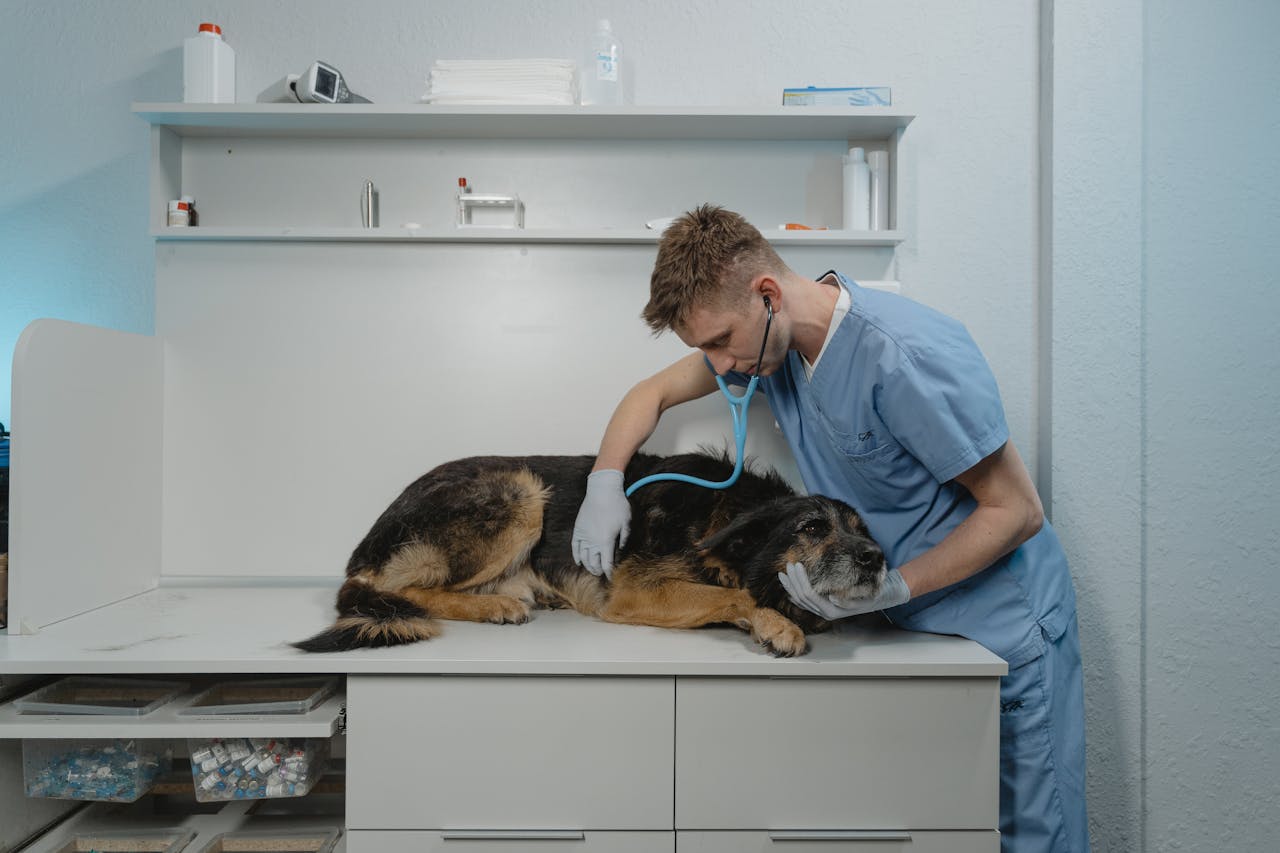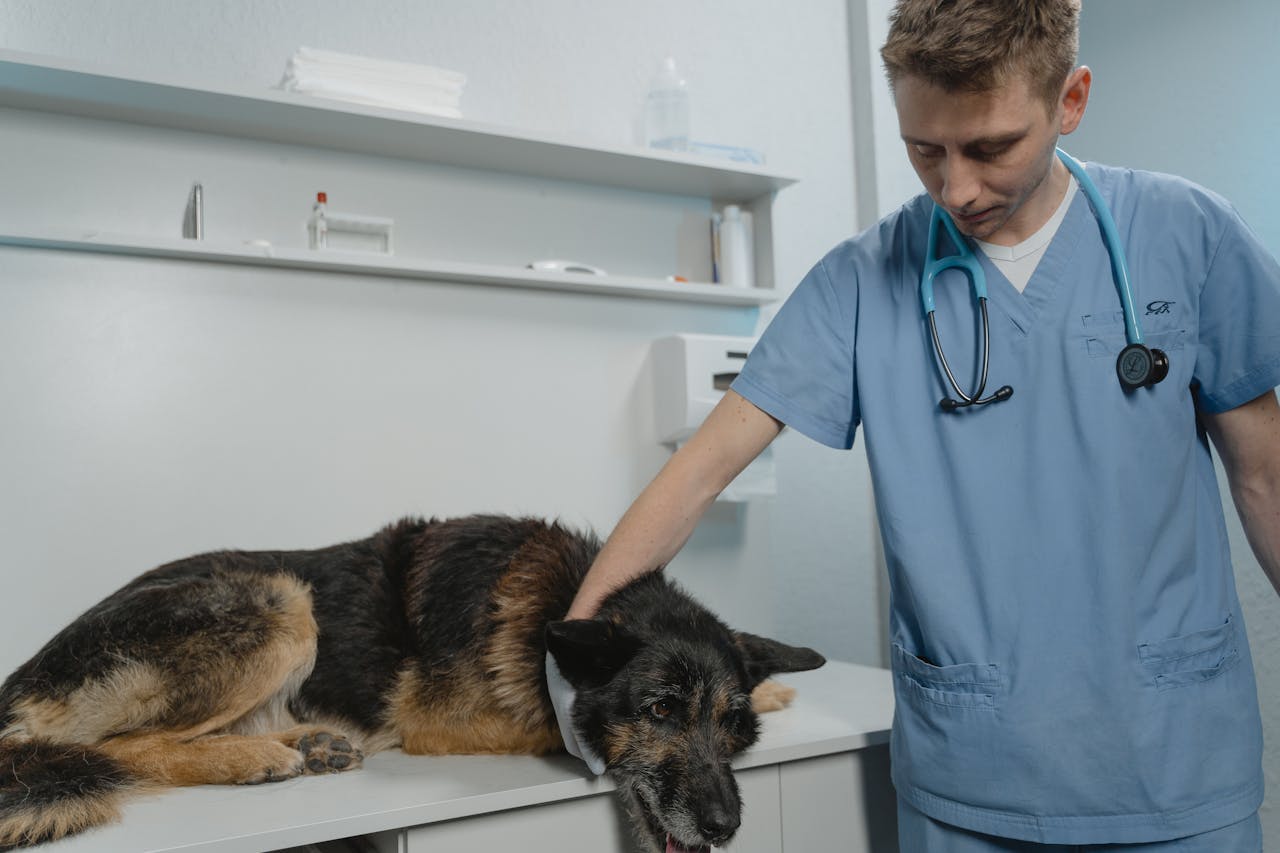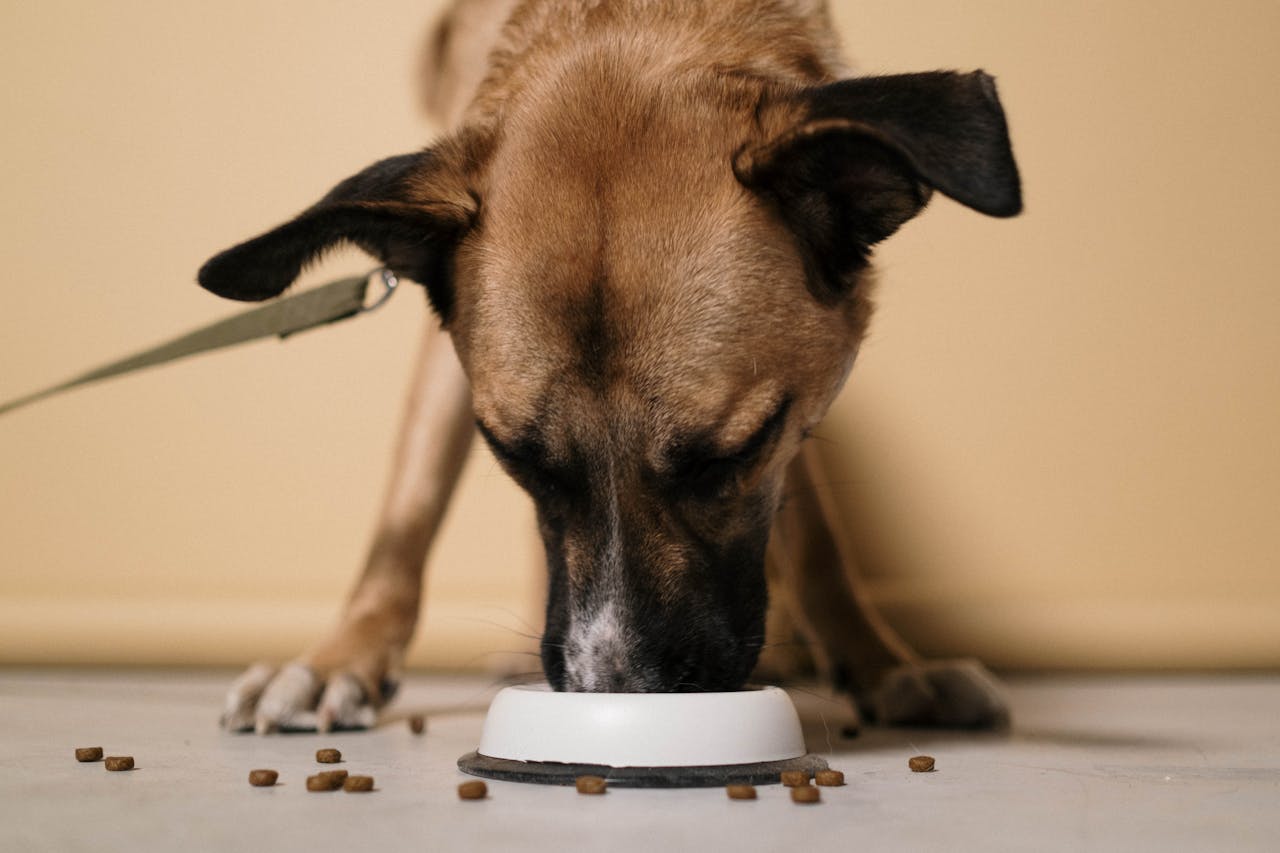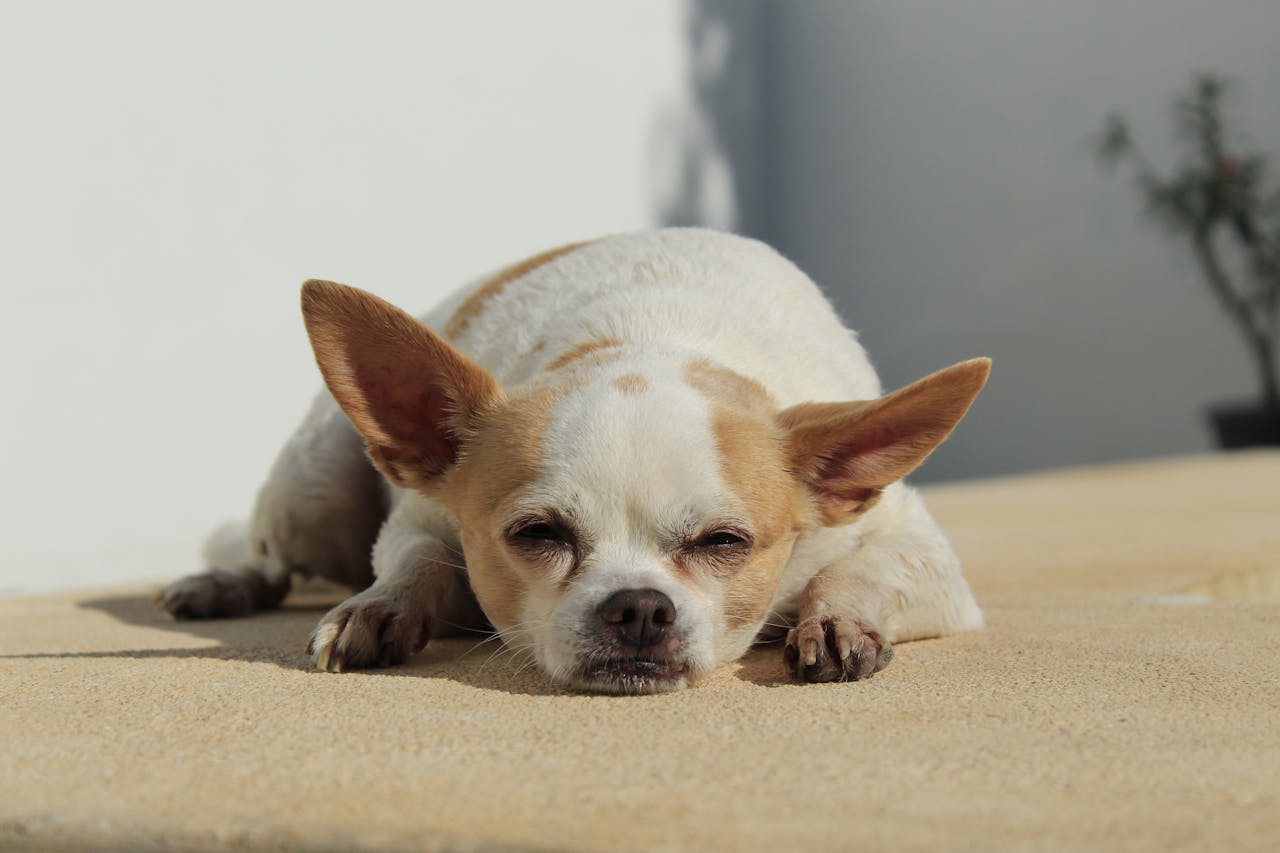Vet-Approved Ways to Prevent Dog Bloat (GDV) Safely

Dog bloat also called Gastric Dilatation-Volvulus (GDV) is one of the most dangerous emergencies in canine health. It happens when the stomach fills with gas and twists, cutting off blood supply. Without immediate treatment, GDV can be fatal within hours.
This guide will walk you through vet-approved bloat prevention tips, how to recognize early signs, and the practical steps every dog parent should know.
Note: Always consult your veterinarian before making changes to your dog’s diet or feeding routine. Your pet’s health is important to us.
What Is Dog Bloat (GDV)?
Dog bloat is more than just a full belly it’s a life-threatening condition. GDV in dogs happens when:
- The stomach rapidly fills with gas, food, or fluid
- Pressure builds up, making it hard for the dog to breathe
- In severe cases, the stomach flips (stomach twisting in dogs), cutting off circulation
Vets consider it an absolute emergency. Knowing the risk factors and early warning signs can save your dog’s life.
Why Should Pet Parents Worry About GDV?
Here’s why GDV is called the silent killer:
- It develops quickly, often within an hour after meals
- Large, deep-chested breeds (like Great Danes, German Shepherds, and Dobermans) are at highest risk
- Without surgery, survival rates drop drastically
Even one episode can permanently damage your dog’s stomach, spleen, and overall health.
Note: Speak with your vet if your breed is considered high-risk they may recommend preventive strategies like gastropexy surgery.
Common Dog Bloat Risk Factors
| Risk Factor | Why It Matters |
|---|---|
| Breed & Body Type | Large, deep-chested breeds are most vulnerable |
| Eating Too Fast | Swallowing air increases stomach pressure |
| Exercise After Meals | Running/jumping can trigger stomach twisting |
| Overeating or Gorging | Heavy meals stretch the stomach beyond safe limits |
| Stress & Anxiety | Nervous dogs swallow more air, spiking risk |
| Genetics | Dogs with family history of GDV are predisposed |
Signs of GDV in Dogs: What to Watch For
Early detection is everything. Call your vet immediately if you see:
- Distended or swollen abdomen (tight like a drum)
- Repeated retching but nothing comes out
- Excessive drooling or foaming at the mouth
- Restlessness, pacing, or signs of panic
- Rapid heartbeat or shallow breathing
- Collapse or weakness in severe cases
Note: If you notice any of these signs, don’t wait contact your vet or nearest emergency clinic immediately.
Vet-Approved Bloat Prevention Tips
Here’s how you can prevent dog bloat at home:
Use Slow Feeder Bowls
- Helps dogs eat calmly and avoid swallowing too much air
- Especially important for fast eaters
Feed Smaller, More Frequent Meals
- Break meals into 2–3 portions instead of one large serving
Avoid Vigorous Exercise Around Mealtime
- No running, jumping, or rough play for at least 1 hour before and after meals
Elevated Feeders: Use With Caution
- Once thought helpful, but research is mixed—ask your vet if it’s right for your breed
Keep Stress Low During Feeding
- Feed in a calm environment to prevent anxiety-driven gulping
Know Your Dog’s Family History
- If GDV runs in the bloodline, talk to your vet about preventive surgery (gastropexy)
Important: These are general guidelines. Please check with your vet before applying them, as recommendations vary by breed, age, and health condition.
Anti-Bloat Bowls vs Standard Bowls
| Feature | Standard Bowl | Vet-Recommended Slow Feeder |
|---|---|---|
| Eating Speed | Very fast (high risk) | Slows eating significantly |
| Risk of Air Intake | High | Reduced |
| Digestive Support | Minimal | Improved |
| Bloat Prevention | Not effective | Strongly advised |
Emergency Action Plan for Suspected GDV
If you suspect stomach twisting in dogs:
- Don’t wait at home. Go to the nearest vet or emergency clinic immediately.
- Do not try home remedies. This is not a condition you can treat on your own.
- Keep a vet’s emergency number handy. Always know your local 24/7 clinic.
Note: Only a veterinarian can diagnose and treat GDV. Quick medical attention saves lives.
Final Thoughts: Protecting Your Dog From GDV
Dog bloat is scary, but with awareness and prevention, you can reduce the risk. The key takeaways:
- Recognize early signs of GDV in dogs
- Use slow feeder bowls and smaller meals to prevent gulping
- Avoid heavy activity before and after meals
- Keep an emergency plan ready
By staying alert and following these vet-approved bloat tips, you’ll give your dog a safer, healthier life.
Reminder: Please check with your vet before taking any preventive steps. Every dog is unique, and your veterinarian can give the best advice for your pet.
Ready to Take the First Step?
At Chonky Paws, we’re committed to helping pet parents with science-backed solutions. Our upcoming slow feeder bowl collection is designed with vets and behaviorists to support digestion and reduce the risk of bloat.
👉 Join the Waitlist Now to get:
- First access to our anti-gulp bowls
- Vet-approved feeding routines
- Weekly tips to prevent dog bloat
